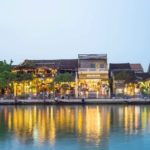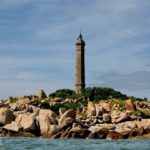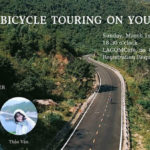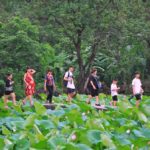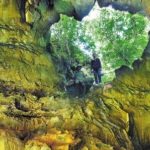Effortlessly navigating through dense jungle and fallen trees, a young Vietnamese man confidently clears a path with his trusty machete. He continues on, undeterred, as something large follows closely behind. The treetops sway and branches snap as an exhausted American catches up with the agile outdoorsman.
“Where are these elephants anyway?” I ask, wiping sweat from my eyes.
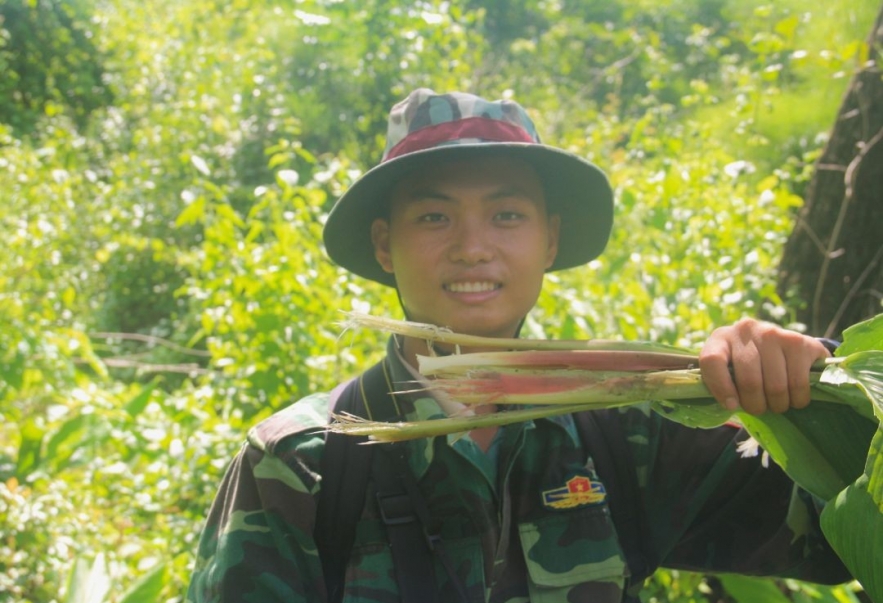 |
| Ranger Sg A’Sử stands amidst elephant-favored roots in Yok Don. Photo by Glen MacDonald |
“Just a little further,” assures Sg A’Sử, my knowledgeable forest guide. Although younger than me, his zoology degree and trekking expertise make him a far more capable leader as we explore Yok Don National Park. This park, located in Dak Lak province, borders Cambodia’s Sre Pok Wildlife Sanctuary, forming one of the largest conservation areas in Southeast Asia. Thanks to its unspoiled, primordial nature, Yok Don National Park has become a sanctuary for several rescued elephants.
As a child, I dreamt of encountering elephants up close. However, a visit to Thailand, where elephant tourism is heavily promoted, revealed the dark truth behind this dream. Elephants used in Southeast Asian tourism are rarely treated with care and respect. Driving past elephant farms in Phuket and Chiang Mai, I witnessed telltale signs of animal abuse: whip and chain scars, the swaying heads of bored creatures, and the indifferent, vacant stare of broken spirits.
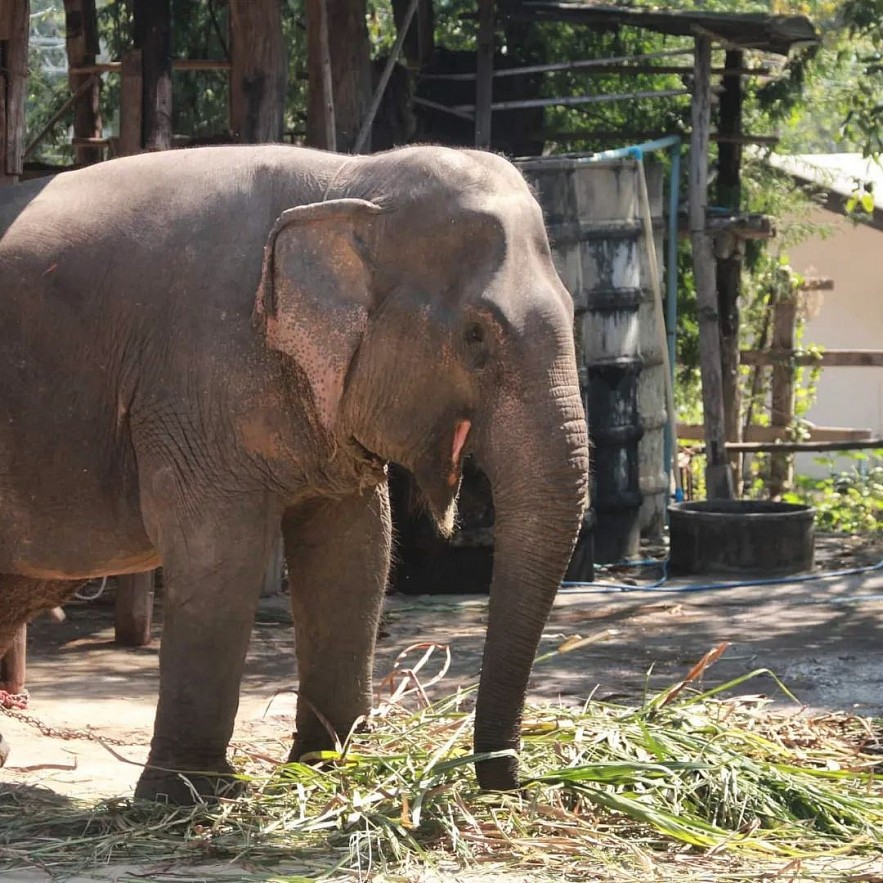 |
| A chained elephant in Chiang Mai, Thailand. Photo by Glen MacDonald. |
Unlike the typical elephant tourist attractions, Yok Don National Park is an actual sanctuary that provides elephants with ample food and space to roam. Living on an island in the Serepok River, these elephants spend their days inland, indulging in lush vegetation and mud pits, or bathing in the river’s gentle currents.
These elephants are not made to perform or cater to tourists. Instead, the tourism model surrounding Yok Don National Park revolves around the elephants’ freedom, providing an intimate and ethical experience for visitors.
While trekking through the jungle, Sg A’Sử displays his extensive knowledge of nature, pointing out wild pig tracks, a bustling ant colony, and chewed roots – remnants of an elephant’s late-night snack. We press on until we encounter a lean man leaning on a walking stick. Sporting a baseball cap and a machete on his hip, this man is one of the Yok Don Elephant Guardians.
Sg A’Sử exchanges soft-spoken words with the Elephant Guardian, taking care not to startle the magnificent creatures. We are close; the precious pachyderms must be near.
The Yok Don National Park employs locals from Dak Lak to safeguard the elephants from poachers. These men follow the elephants diligently, reporting on their well-being. From the rustling of tree branches, it’s easy to tell that the elephants are well-fed.
“Look!” whispers Sg A’Sử, barely above a breath. “They’re just ahead.”
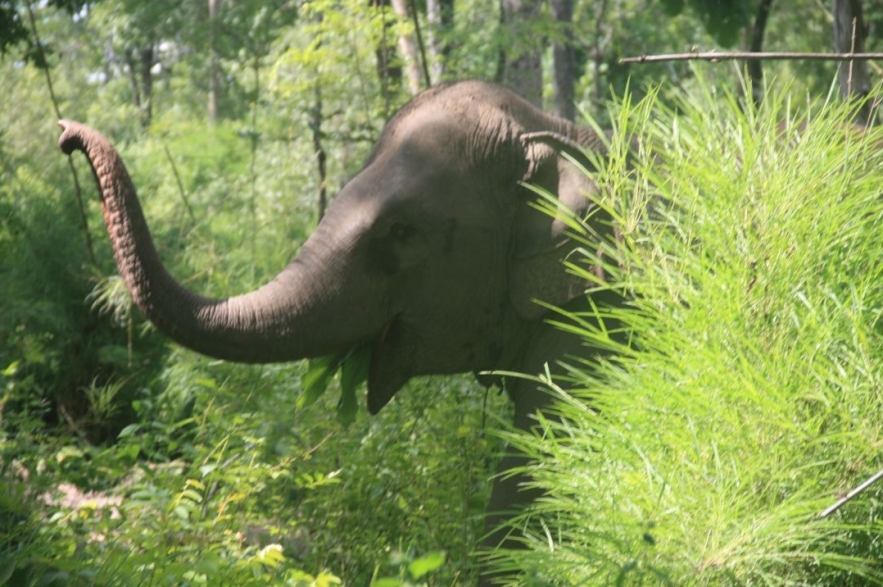 |
| My first sighting of a wild elephant. Photo by Glen MacDonald. |
I catch sight of a large trunk, rising like a periscope above the green undergrowth. Soon after, the attached head appears, complete with two flapping ears. Before me stands a semi-wild elephant, greeting me with a gentle snort from its lengthy snout.
Being large creatures, Asian elephants spend most of their time foraging for food and finding ways to cool off from the heat of the jungle. Mud pits serve as an oasis for these majestic beings. They consume the loose soil, which provides necessary minerals to supplement their substantial diet. Additionally, by slinging mud onto their bodies, they can regulate their body temperature.
A few other Elephant Guardians join us as we watch over another elephant. All of the Guardians are soft-spoken, middle-aged men. They greet me with a silent smile and continue their watchful surveillance. Should I get too close, they gently remind me to step back and give the animals space.
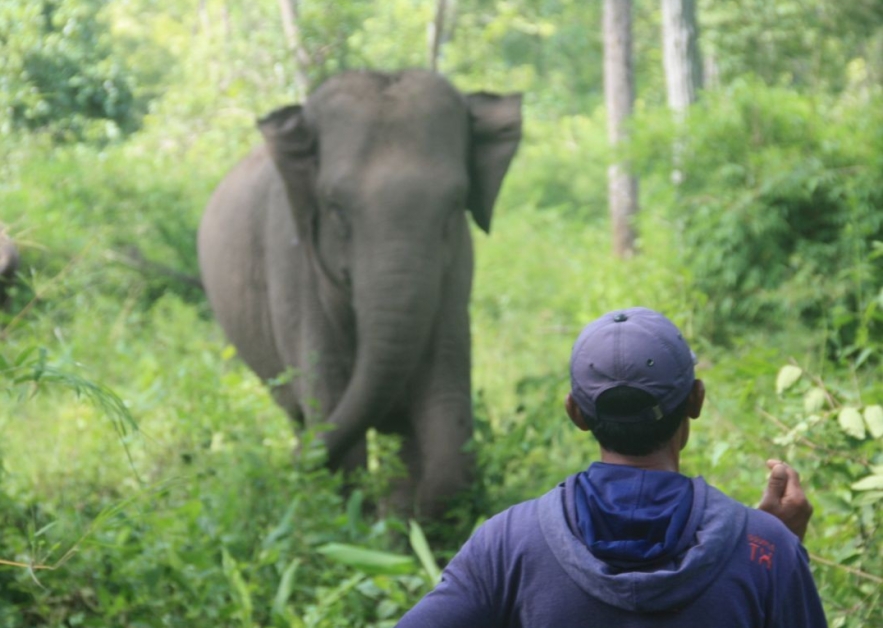 |
| Under the protective gaze of the Elephant Guardians. Photo by Glen MacDonald. |
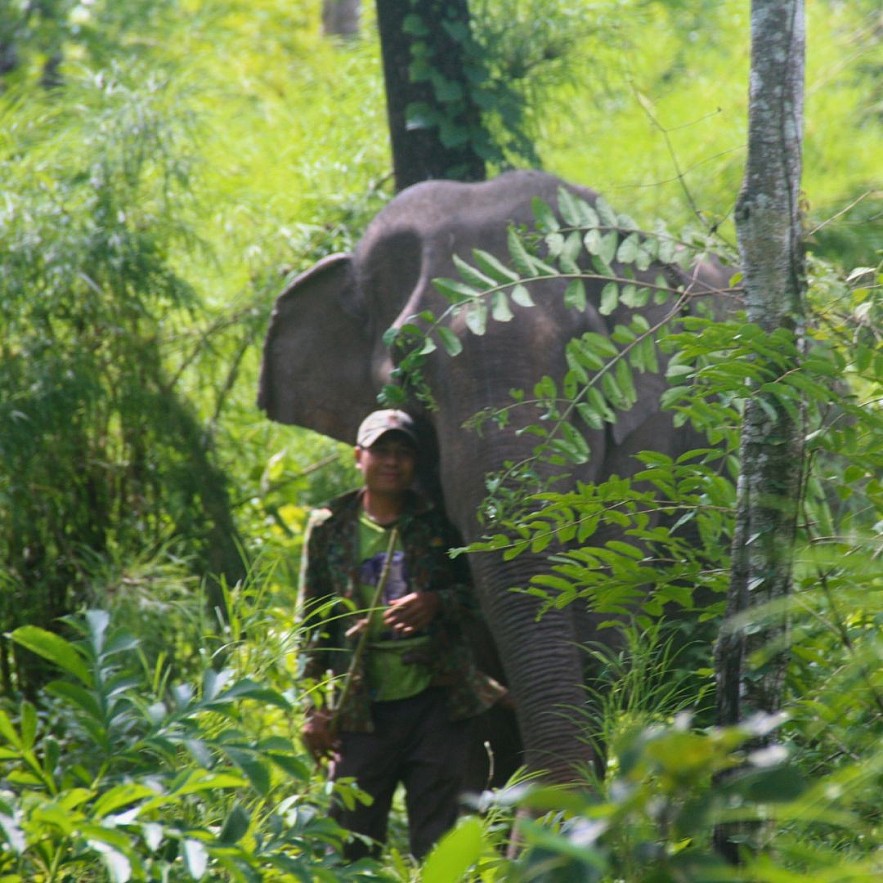 |
| Friendly protectors. Photo by Glen MacDonald. |
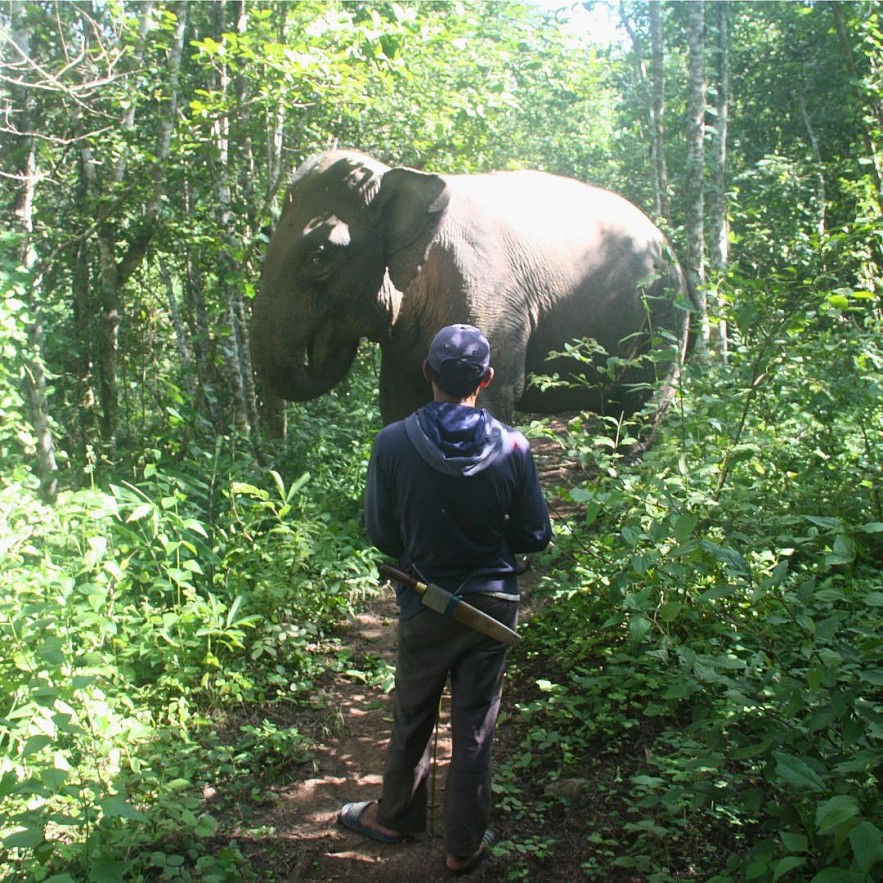 |
| Appreciating the beauty of nature. Photo by Glen MacDonald. |
Sg A’Sử, the Elephant Guardians, and I spend the next few hours strolling beside the elephants near the mud pits. While my guide and the Guardians confidently navigate the muddy terrain, I stomp through vegetation and dirt like the elephants themselves.
At one point, a Guardian extends his hand, inviting me to join him on an elevated forest path circling the mud pits. Moments later, an elephant follows me up the small hill, nearly crashing into a tree along the way. Unlike the elephants in Thai tourist attractions, these animals move freely and confidently. One elephant grows curious about my bulky camera and investigates it by extending its trunk.
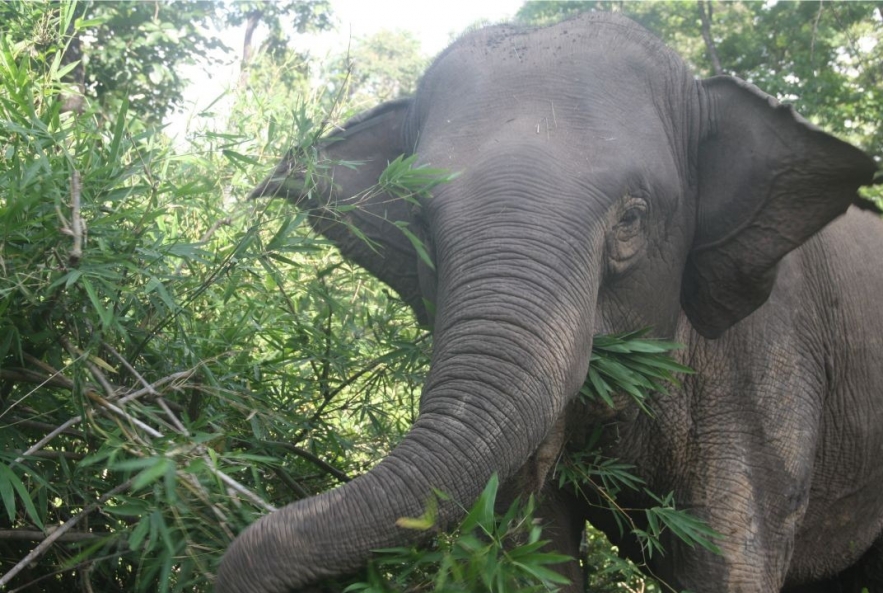 |
| Up close with the giants of the animal kingdom. Photo by Glen MacDonald. |
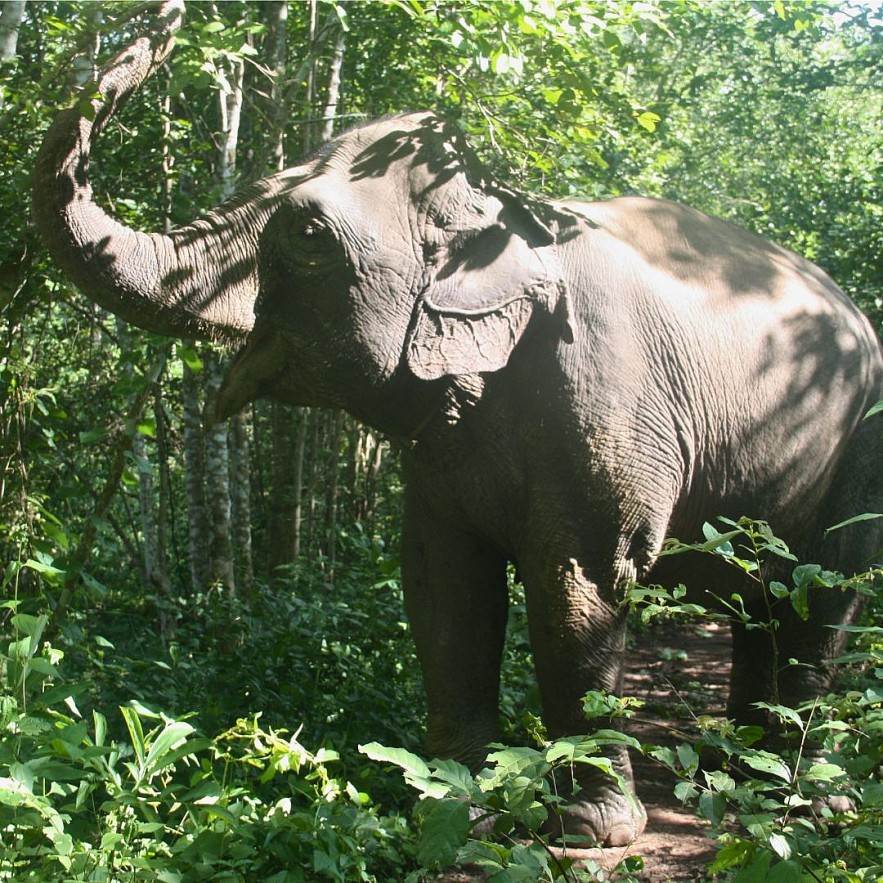 |
| A symphony of trumpeting elephants in the jungle. Photo by Glen MacDonald. |
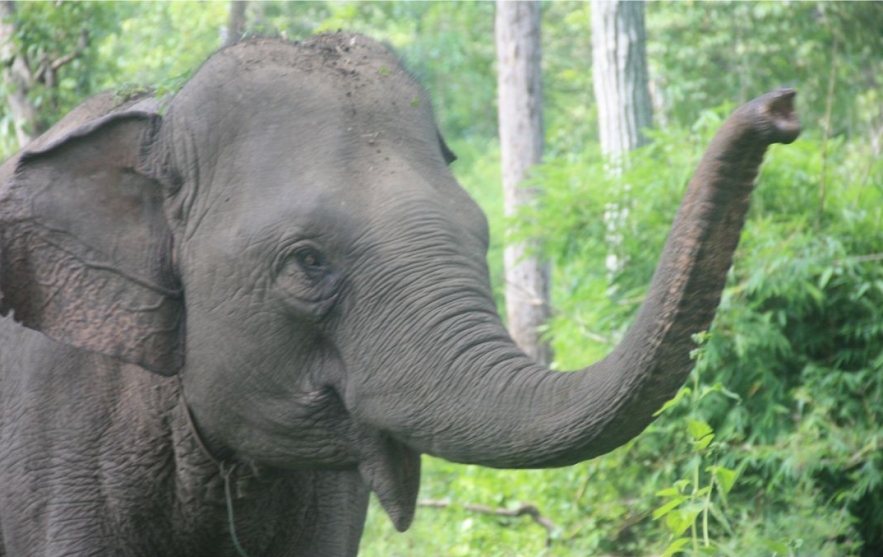 |
| A cute companion with a lengthy snout. Photo by Glen MacDonald. |
After capturing a few more photos, Sg A’Sử and I bid farewell to the elephants and their dedicated Guardians. Once we are far enough away, a euphoric laugh escapes from me. I’d been so close!
I ask Sg A’Sử about the future for these elephants.
“Elephants can live for more than half a century. Despite their size, these elephants are still young. They will continue enjoying the island until their teeth wear out or they pass away naturally, likely in their 70s or 80s. Until then, the Elephant Guardians and I will protect them.”
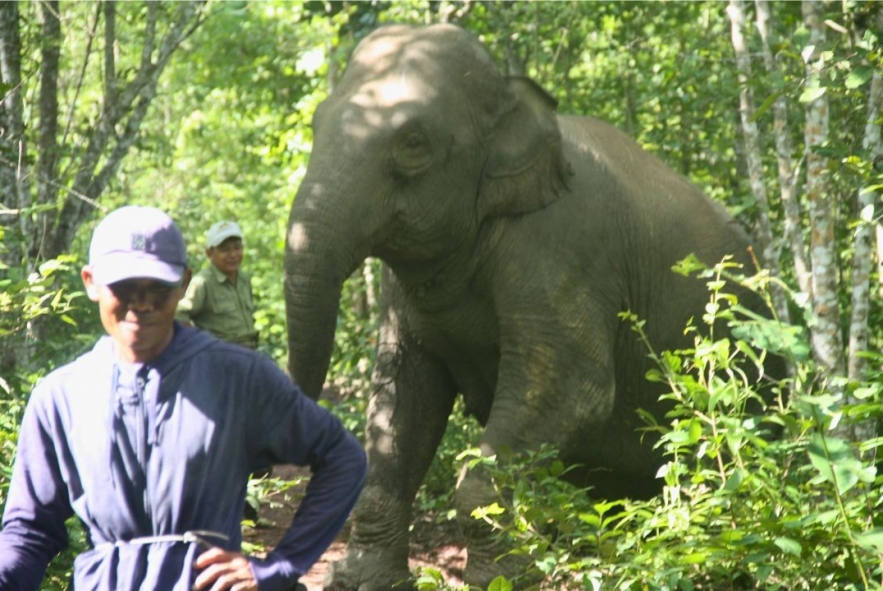 |
| Walking with the giants. Photo by Glen MacDonald. |
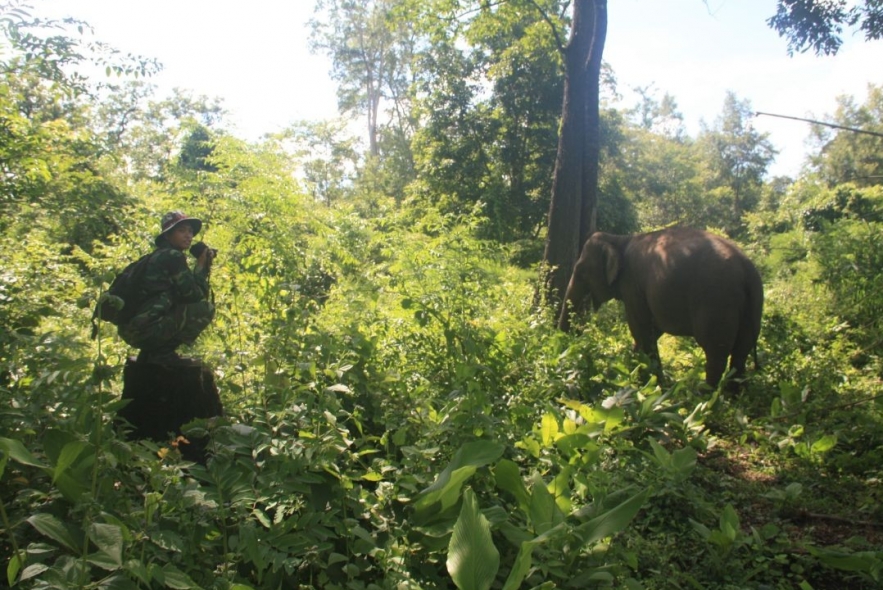 |
| Sg A’Sử capturing the magnificence of the elephants. Photo by Glen MacDonald. |
I am in awe of Yok Don National Park and its staff. The park’s focus on conservation and animal rights is a rarity in Southeast Asia, making the work of the Elephant Guardians even more vital. This dedication sets a crucial example for ethical wildlife tourism across the region. As Vietnam’s tourism industry recovers, other parks should follow in their footsteps, allowing the public to witness the majesty of the animal kingdom with respect and care.
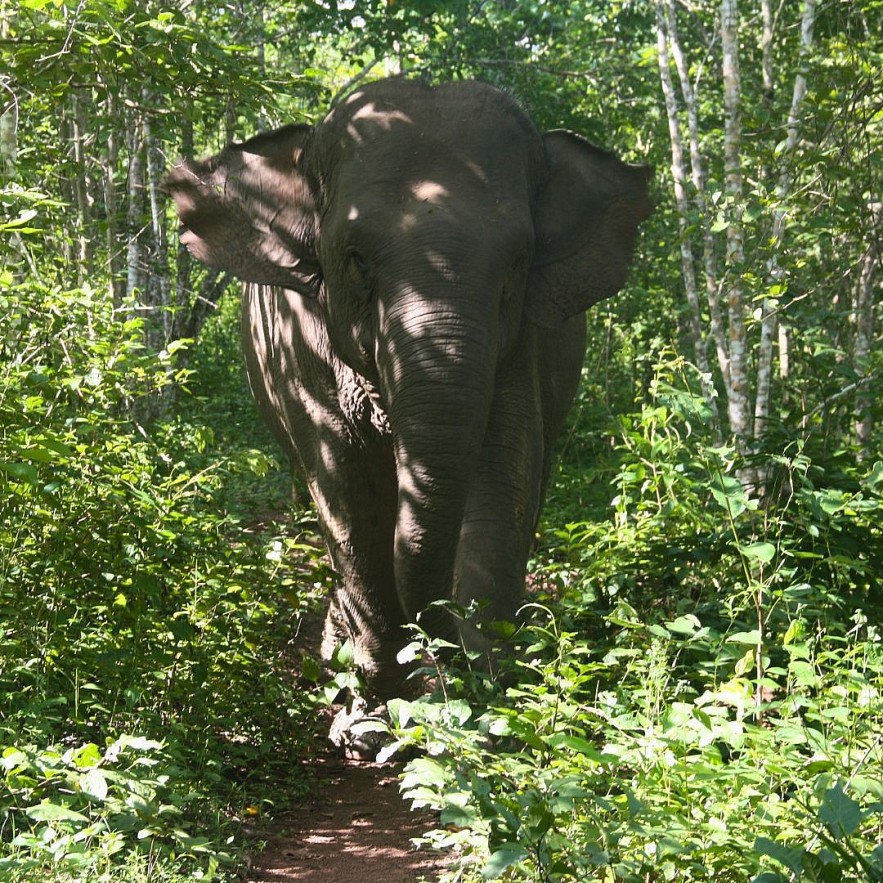 |
| The true king of the jungle. Photo by Glen MacDonald |
| Yok Don National Park was established in 1991 and is currently home to six adult elephants rescued from nearby farms and tourist attractions. |
| To have an up-close experience with these magnificent creatures, visitors can purchase a half-day tour for 800,000VND or a full-day tour for 1,400,000VND (including lunch). Besides encountering elephants, visitors can enjoy fishing, birdwatching, and boating tours. |
| Accommodation options are also available, ranging from rooms priced at 350,000VND to tents at 150,000VND. For the adventurous, hammocks are available for 50,000VND. |
| Most tourists reach Yok Don National Park from the nearest city, Buon Ma Thuot. Buses to the park run every 30 minutes at a cost of approximately 22,000VND. Taxis are also available at a higher price. |
| For residents of Ho Chi Minh City, sleeper buses departing from Mien Dong Bus Station provide easy access to the park. |

